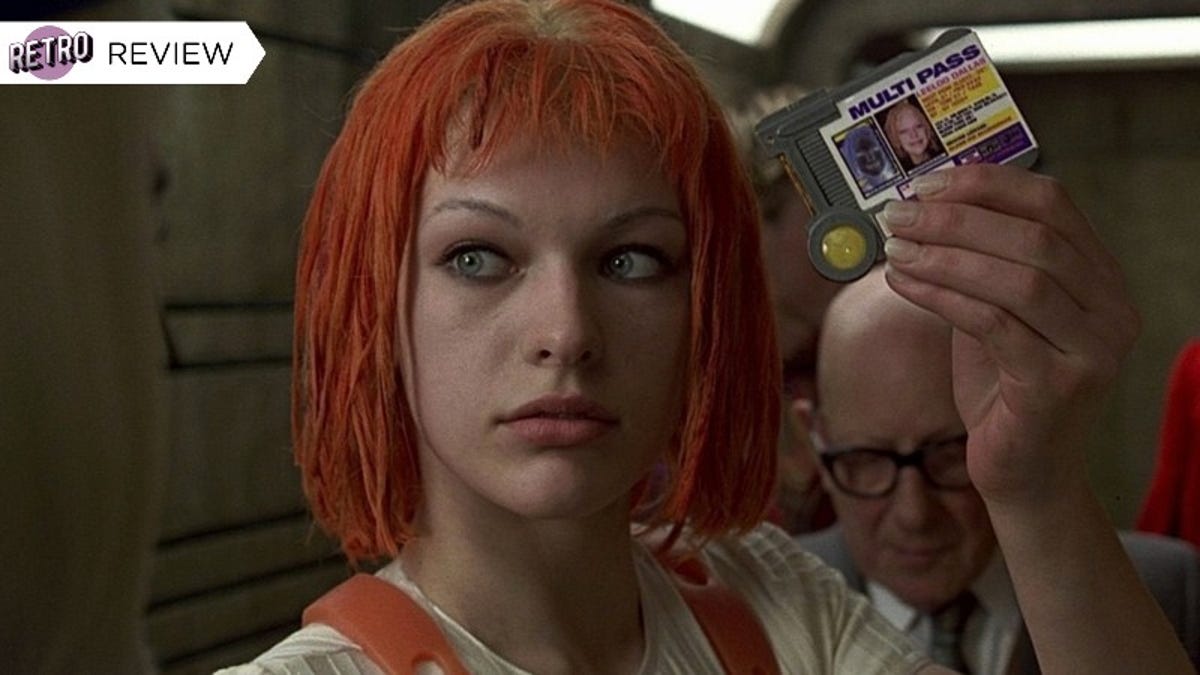
A few years before ti have one dodged bullets in The Matrix or Darth Maul emerged in The Phantom Menacea red-haired savior name Leeloo said “mlast pass.” The ’90s were a wonderful time for fans of science fiction, with instant hits like jurassic-park and independence day and The Matrix and Star Wars Episode I: The Phantom Menace. But buried among them all, almost unassumingly, was Luc Besson’s bonkers, beautiful The Fifth Elementand today it feels like a film very much stuck in the middle of a movement.
when The Fifth Element was released wide on May 9, 1997, 25 years ago today, it was a solid hit. On a big budget of about $90 million, it grossed over $260 million worldwide. In the US though, it only grossed $60 million, relegating it closer to cult status than mega-blockbuster. And revisiting the film a quarter-century later, you see why. It’s a roller coaster of tone and intention that makes it feel incredibly unique but also understandably polarizing.
Beginning in Egypt 1914, The Fifth Element instantly hits the audience with a ton of mythology. We learn that every 5,000 years, an unspeakable evil appears in the universe, and only an all-powerful being called, you guessed it, the Fifth Element, can stop it. Massive aliens then show up and explain that the evil is still 300 years away. The story then fast forwards 300 years and the Fifth Element emerges in the form of a young woman named Leeloo (Milla Jovovich) who literally falls into the life of Korben Dallas (Bruce Willis). Korben is a cab driver who used to be a special forces officer; through a largely silly set of circumstances (which include supporting characters played by the likes of Gary Oldman and Ian Holm), I finds himself protecting Leeloo as they go on a mission to get the four other elements, unite them, and save the galaxy.

There’s a lot, a lot, a lot more going on in The Fifth Element, but that’s the basic framework. And, for the first 30 minutes or so, all of it feels cohesive, methodical, and familiar. Your basic sci-fi, save-the-worldstuff: a futuristic setting, reluctant hero, powerful yet mysterious woman, etc. But at a certain point, basically the moment Korben is forced to shove five people into the bowels of his one-room apartment to keep up a ruse, The Fifth Element begins to shift. What started as a more serious, traditional sci-fi story becomes an almost absurdist, screwball comedy. There are jokes, wacky situations, and general oddness that peaks with the introduction of Ruby Rhod, played by Chris Tucker.
G/O Media may get a commission

Save $100
Apple AirPods Max
Experience Next-Level Sound
Spatial audio with dynamic head tracking provides theater-like sound that surrounds you
Ruby Rhod is basically a hyper-energetic Howard Stern of the 23rd century. He’s an ultra-popular radio host who runs around commenting on what’s going on live for the whole galaxy to hear, and his manic energy combined with machine-gun dialogue smacks The Fifth Element in the face. Even coming after a few humorous scenes, once Ruby arrives, you almost don’t believe you’re still watching the same movie, which is both refreshing but also a little confusing. You can’t help but be enamored by the larger-than-life character that bursts onto the screen, but he briefly distracts from everything else. Thankfully, soon after, The Fifth Element gets back on track and begins to ease itself back into the tone it began its story with—youhat of a more traditional sci-fi action film.
Rewatching The Fifth Element for the first time in two decades, it was those radical swings that stuck with me. They felt so bold, so brave, but only partially successful. Which, in a way, is The Fifth Element as a whole. Scenes set across multiple centuries, complete with intergalactic travel, cool guns, and flying car chases make it feel almost like a natural progression from films such as Total Recall, Stargate, or independence day on a story level. But on a visual level, it eclipses those movies exponentially. The film’s production design, costumes, and special effects are all beyond spectacular. Every choice Besson makes regarding the look of the film is 100 percent The Fifth Element. You are never going to look at Leeloo’s costume or Ruby’s hair and get it mixed up with another movie. It’s a unique, stunning vision.

A few years later though, movies like The Matrix, The Phantom Menace, and The Lord of the Rings would similarly adopt this epic, brash, unique style of world-building. Sure, some of that was based on previous IP, but the scale of The Fifth Element, and its release a few years prior to those mega-hits, almost makes it feel like a sign that Hollywood needed to step things up from sci-fi of the previous years. The film is like a permission slip to go a bit bolder, a bit wilder, and we haven’t looked back since.
is The Fifth Element actually that influential? It’s hard to say. But 25 years after its release, the film’s messy, beautiful nature certainly feels hugely transitional. It has some elements that are perfectly 1997 and others that are more 2022. Together, that mix of past, present, and future can be a little bit rough. But there’s little doubt that overall, The Fifth Element was ahead of its time in ways both good and bad. That makes it just as fun to watch and talk about now as it was then.
The Fifth Element is currently streaming on both Prime Video and Paramount+.
Want more io9 news? Check out when to expect the latest Marvel and starwars releases, what’s next for the DC Universe on film and TVand everything you need to know about House of the Dragon and Lord of the Rings: The Rings of Power.
.
